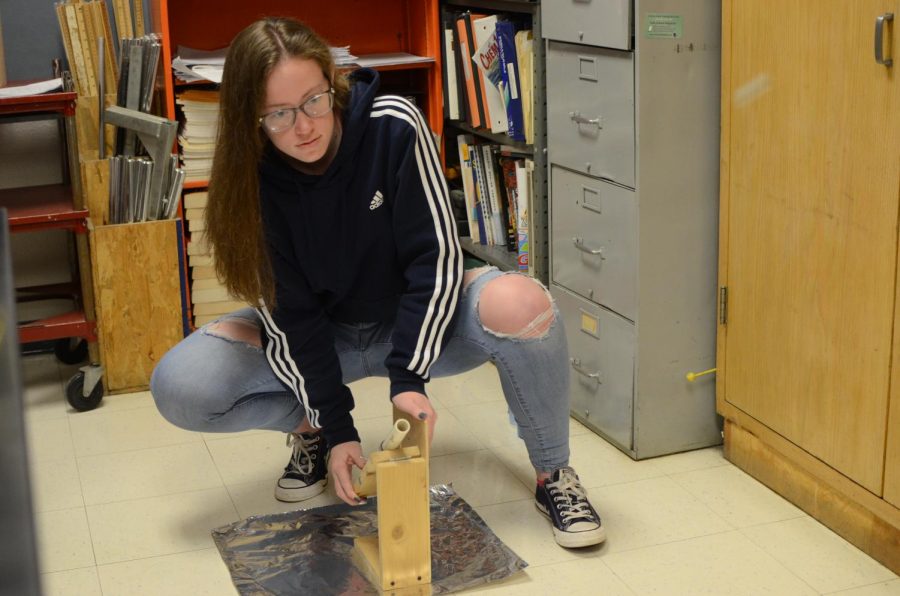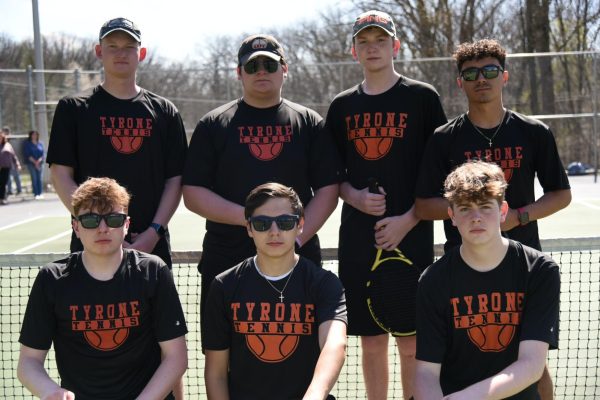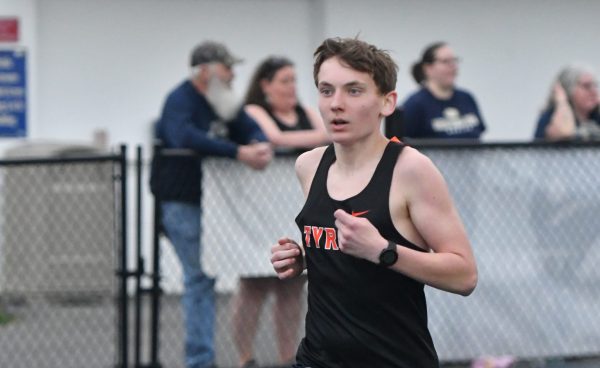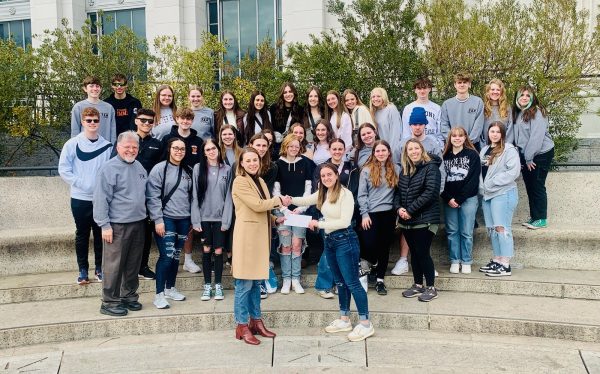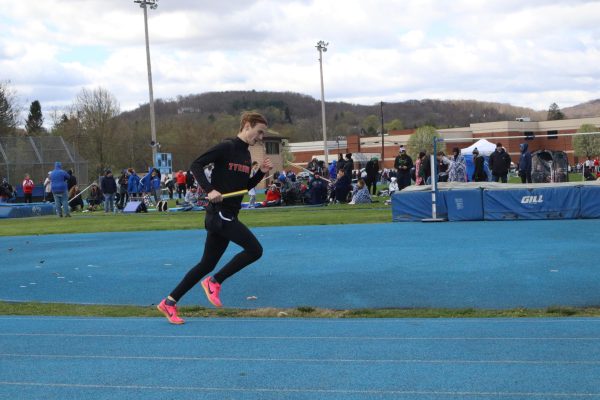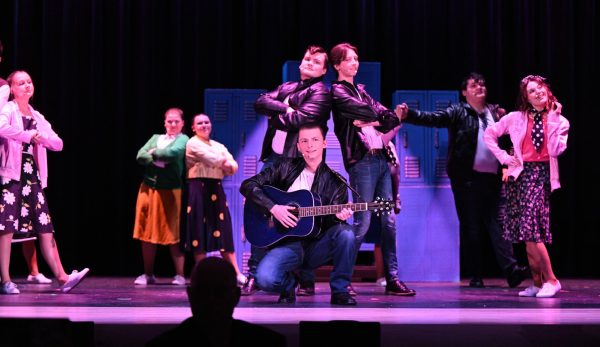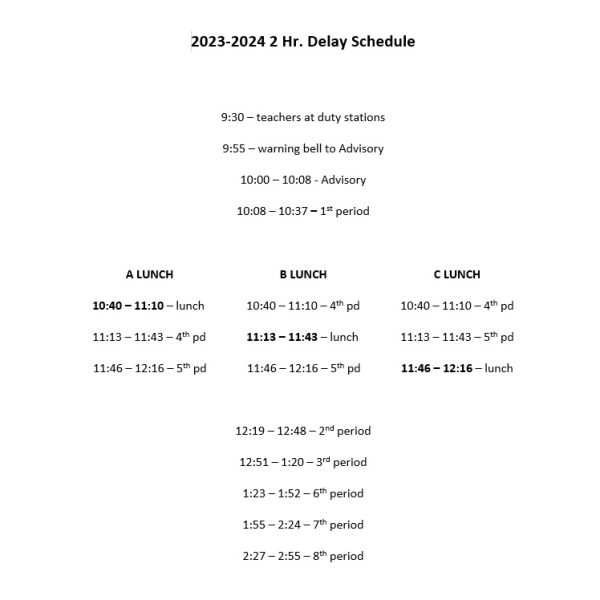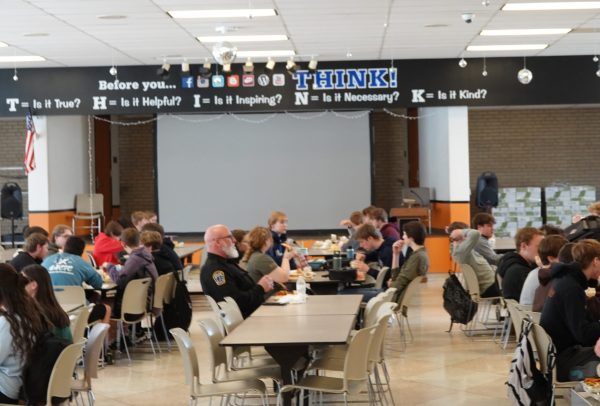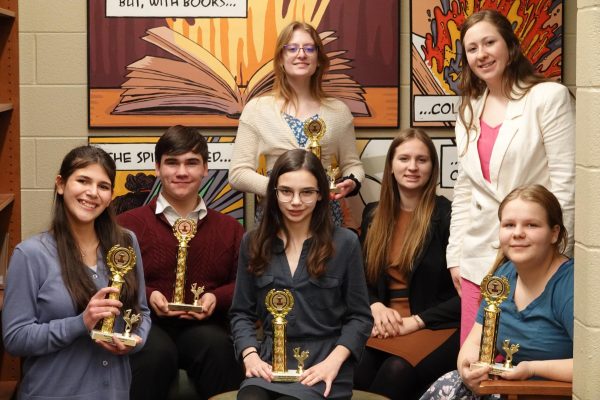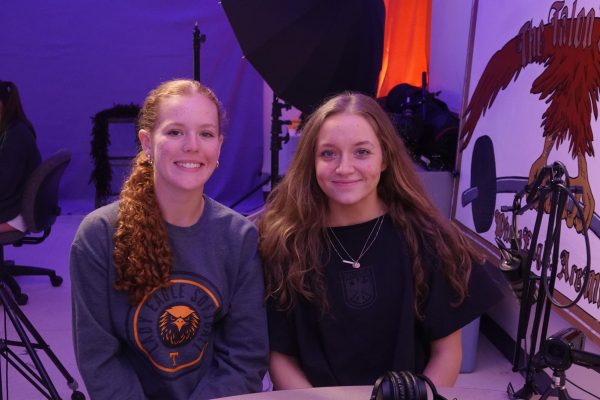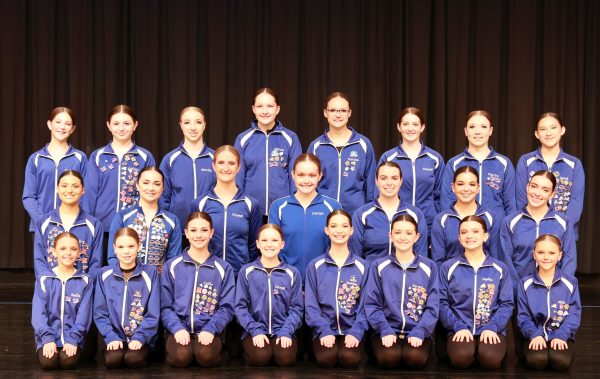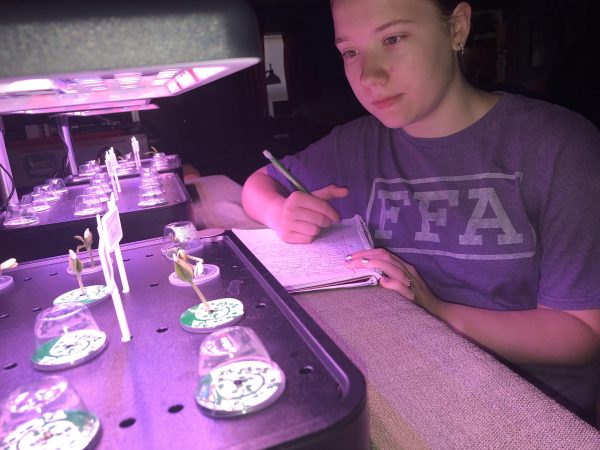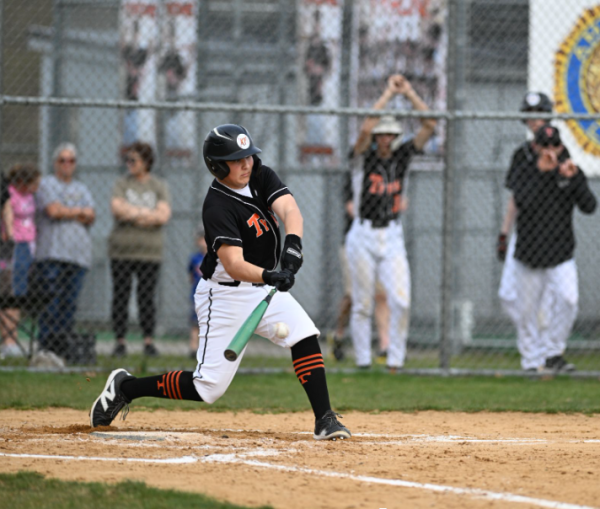Physics Students Play Projectile Tanks
Students in Mr. Brian Gruber’s physics class have been learning about projectile motion and applied their knowledge in a classroom-sized game of tanks.
Gruber constructed the launchers out of wood and PVC pipe a couple of years ago for a different lab dealing with projectile motion. After not using them for a couple of years, Mr. Gruber thought this year he would try something new.
Tyrone math teacher Chris Shedd approached Gruber with an idea for a STEM activity dealing with graphing projectile motion and the activity started to come together.
By graphing the data, the kids were able to see the way motion forms a parabola. After we did the graphing, I started to think about how we could make the activity a little bit more engaging and I came up with some rules for a tank game, — Mr. Gruber
The students began the lab by launching marbles from different angles and recording how far each marble went. After recording the data, the students put the data into Google Sheets to make a graph.
“By graphing the data, the kids were able to see the way motion forms a parabola. After we did the graphing, I started to think about how we could make the activity a little bit more engaging and I came up with some rules for a tank game,” said Gruber.
Students were excited to do the activity after learning about projectile motion and doing problems.
“After a couple of weeks doing projectile problems, it was fun to put our knowledge to use and to play a game,” said junior Kelton Raabe.
The rules of the game were simple. The object was to hit as many other launchers as possible and to avoid hits on their own launcher. Eight launchers were set up around the classroom for eight teams. For each turn, the team was allowed two moves: to move the launcher two blocks on the floor or to shoot at another launcher. They could do a combination, move twice, or shoot twice.
The students used Desmos, an online graphing calculator to determine how to shoot the marble. If the marble hit in one of the eight boxes surrounding the launcher, it was considered as a “hit.” If a team received two hits, they were unable to move in future turns.
After completing the activity in one class, the students decided to make some changes to the rules and play again.
It was really fun to apply what we have been learning in class and strategize in the game. After playing the first round, we decided to change some of the rules and play again. It was a really good time, — Wade Hendrickson
“It was really fun to apply what we have been learning in class and strategize in the game. After playing the first round, we decided to change some of the rules and play again. It was a really good time,” said junior Wade Hendrickson.
While the students enjoyed the activity, it was also a beneficial learning experience.
“I really like the activity because it requires students to use Google Sheets and Desmos. In the future, I would change a couple of the rules, but I would like to continue doing the activity,” said Gruber.

This is Lucia’s fourth year in Eagle Eye and her third year as Photo Editor. She is very excited to express her creativity and find new ways to take...



